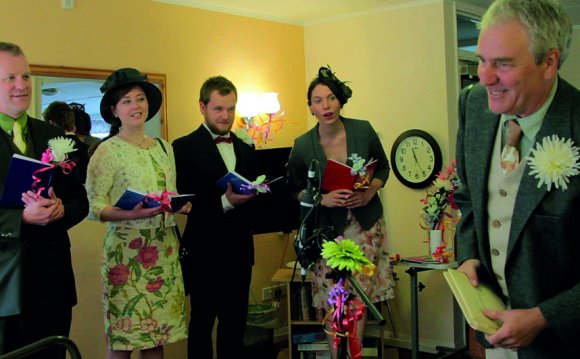
 Cornwall, The united kingdomt
Cornwall, The united kingdomt
Location of the very first Transatlantic radio transmission on Dec. 12, 1901
by Virginia Dahms, KD9E
Guglielmo Marconi
At 12:30 a.m. (4:30 UTC) on, in St. John's Newfoundland, Guglielmo Marconi distinguished three light ticks through the earphones of his wireless receiver - the Morse Code letter "S" - and a unique era was born. The signal had been delivered through the Poldhu Wireless Station in an austere place on a cliff across the south Cornish coastline of The united kingdomt.
The website in Cornwall was chosen for the remoteness to keep the project out from the public attention and out of the periodicals. In 1900, Marconi made a decision to work with secret without press hounding him or speculating on the results of his undertaking. He had been just 27 yrs . old during the time and would not be dissuaded by critics.
Concrete ground for the generator that ran the Poldhu wi-fi facility erected by Marconi's Wireless Telegraph Company in 1900.
Picture by Virginia Dahms
The continues to be regarding the long-defunct Poldhu Wireless facility tend to be visible to the intrepid seeker of Marconi lore along a stunningly gorgeous, however rugged cliff top and within age-old rock wall space that surround a cow pasture.
The Poldhu wi-fi facility had been dismantled in 1933, four years before the loss of Guglielmo Marconi.
Guglielmo Marconi was born April 25, 1874 in Bologna, Italy, the child of an Italian parent and an Irish mother. Their desire for medical experimentation began as a boy and continued throughout their life.
 |
|
Poldhu Wireless Station, Cornwall, 1900
|
In 1896, Marconi found its way to England, as well as on for cordless telegraphy utilizing radio waves. This was the start of a lifetime career that could win him the Nobel reward in Physics in 1909.
In 1897, Marconi formed his very first wireless organization, The cordless Telegraph and Signal Company. Here 12 months, wireless telegraphy was initially utilized as a method of interaction between ships and lighthouses.
Remnants of Marconi's transmitting station at Poldhu, Cornwall. Picture by Virginia Dahms
In March, 1898, Marconi established cordless interaction throughout the English Channel between France and England.
In 1900, the business became Marconi's Wireless Telegraph Company. That business has grown into a worldwide communications and information technology business that was rebranded Marconi plc in 1999.
Marconi persuaded investors to blow £50, 000 from the transatlantic project which had no shortage of skeptics at change of final century. In October, 1900, Marconi's cordless Telegraph Company commenced creating the Poldhu Wireless Station in Cornwall, The united kingdomt.
This array of transmitting antennas or masts at Poldhu ended up being damaged in storms.Through the assortment of Marconi Corporation, PLC
 By 1901, the Poldhu Wireless Station had effectively sent cordless indicators to boats at distances over 200 miles.
By 1901, the Poldhu Wireless Station had effectively sent cordless indicators to boats at distances over 200 miles.
On the other hand for the Atlantic, a website on Cape Cod ended up being originally plumped for. Numerous troubles including poor weather necessitated the move regarding the obtaining section from Cape Cod to St. John's Newfoundland, which was also 600 miles closer to Cornwall.
The curvature of the planet was considered to be the limiting aspect as to how far radio waves could travel. On the 1, 800 miles from Poldhu to St. John's, the curvature for the planet would-be analogous to crossing a mountain of water 125 kilometers high. Marconi's critics proposed that radio waves would not ensure it is over these types of distances.
Masted transmitter range toppled by Atlantic storms in September, 1901.
Through the assortment of Marconi Corporation, PLC
Marconi's project was fraught with problems. On both sides of Atlantic, foul-weather and storms ruined transmission towers and gear, delaying the task further and further. The initial attempted transmission had been on December 11, 1901, however it were unsuccessful.
Because time and economic constraints, Marconi opted not to build a masted receiving antenna array. The original receiving antenna in Newfoundland had been four ins in diameter and was held aloft by a balloon which was torn asunder in a storm. Marconi abandoned the balloon and launched another antenna on a kite tethered to an aerial cable over 550 legs very long.
The transmitted energy thereon historic night in Poldhu, Cornwall, was about 12 kW and wavelength 366 yards. Later on observations recommended that exactly what Marconi really heard from spark space transmitter across the Atlantic was really a harmonic.
Granite monument in Poldhu, Cornwall, England, commemorating the very first transatlantic radio transmission on December 12, 1901.
Photo by Virginia Dahms
Dealing with overwhelming odds, Marconi along with his staff achieved exactly what most skeptics, including experts and entrepreneurs, stated couldn't be done. He proved that cordless radio interaction was both possible and practical.
Despite having most of his transmitting and receiving gear damaged or harmed by storms right before their intended transatlantic transmissions, Marconi persevered and proved that inspite of the curvature for the planet, radio wave propagation ended up being possible on the whole world.
In 1902, Marconi received messages reliably over distances of 700 kilometers by day and over 2, 000 miles when the sun goes down, hence initially finding the popular undeniable fact that radio waves propagate better at night than by-day.
During WWI, in 1916, Marconi attained crucial results in wireless telegraphy making use of short waves - the 15m musical organization. He demonstrated that brief revolution signals propagate effortlessly by-day or by night with minimum power necessity.
Commemorative plaque in the granite Marconi Monument towards the top of the high cliffs overlooking the ocean at Poldhu, Cornwall, England. Picture by Virginia Dahms


Share this article
More about Port Isaac (Cornwall)



